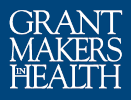The Final Reconciliation Package: Implementation of Key Provisions
On July 4, 2025, H.R. 1, the One Big Beautiful Bill Act, was signed into law. The implementation dates for key health care provisions in the law vary, with some taking effect immediately upon passage and others being implemented over several years. This resource details key dates for the implementation of the law’s most significant health care provisions.
Deadlines in Health-Related Executive Orders and Presidential Memoranda
This GIH policy resource details many of the health-related executive orders issued by the administration and includes a calendar of upcoming deadlines for when those orders are expected to be implemented.
Beyond the Exam Room: Impacting Health Outcomes Through Civic Engagement
August marks Civic Health Month, a time to showcase the link between voting and health and celebrate efforts that ensure every voter can support their community’s health at the ballot box. At the same time, the United States is grappling with a health care system ranked 37th globally despite consuming 17 percent of the country’s GDP. With 26 million Americans uninsured and 43 million underinsured, the gap in access to care continues to widen. This crisis will deepen as critical ACA subsidies expire at the end of 2025, potentially leaving 3.8 million more Americans without coverage, in addition to new federal cuts to Medicaid and changes to how coverage is accessed through the health insurance marketplace, which could result in as many as 20 million Americans losing their health insurance.
United Hospital Fund: May 2024
The United Hospital Fund of New York released a report, The Ripple Effects of the Adolescent Behavioral Health Crisis, which analyzes the behavioral health crisis in the United States and groups who are disproportionately affected. The report also quantifies the impact of the adolescent behavioral health crisis on medical costs, productivity, and wages.
The Kate B. Reynolds Charitable Trust: May 2024
The Kate B. Reynolds Charitable Trust recently published a 10-year evaluation of Healthy Places NC, its signature place-based initiative to improve health in rural NC communities. The Healthy Places NC evaluation provides insights for fellow funders in various sectors who want to shift norms, systems, power dynamics, and other conditions that produce inequity, particularly in rural communities.
In July of 2020, the Foundation worked with partners to conduct a survey of over 1,000 Missouri adults to understand firearm-related beliefs, attitudes, perceptions, and behaviors within the state with the intent of informing stakeholders interested in firearm injury and death prevention. Topics for the reports include firearm suicide beliefs and practices, perceptions and storage practices, background checks, and more.
Missouri Foundation for Health: May 2024
The Missouri Foundation for Health recently released a series of publications based on the findings of its Missouri Firearms Survey.
In July of 2020, the Foundation worked with partners to conduct a survey of over 1,000 Missouri adults to understand firearm-related beliefs, attitudes, perceptions, and behaviors within the state with the intent of informing stakeholders interested in firearm injury and death prevention. Topics for the reports include firearm suicide beliefs and practices, perceptions and storage practices, background checks, and more.
Foundation for Opioid Response Efforts: May 2024
The Foundation for Opioid Response Efforts (FORE) released its 2023 annual report, which highlights the progress its grantees have made in addressing the opioid crisis last year.
Episcopal Health Foundation, Methodist Healthcare Ministries of South Texas, Inc., and St. David’s Foundation (TX): May 2024
Episcopal Health Foundation, Methodist Healthcare Ministries of South Texas, Inc., and St. David’s Foundation sponsored a report from Altarum, Economic Impact of Health Disparities in Texas, finding that Texas is losing over $7 billion annually due to excess medical spending and productivity loss. The report includes economic impact estimates for all 254 counties in Texas and highlights both the human cost and economic burden of health disparities.



